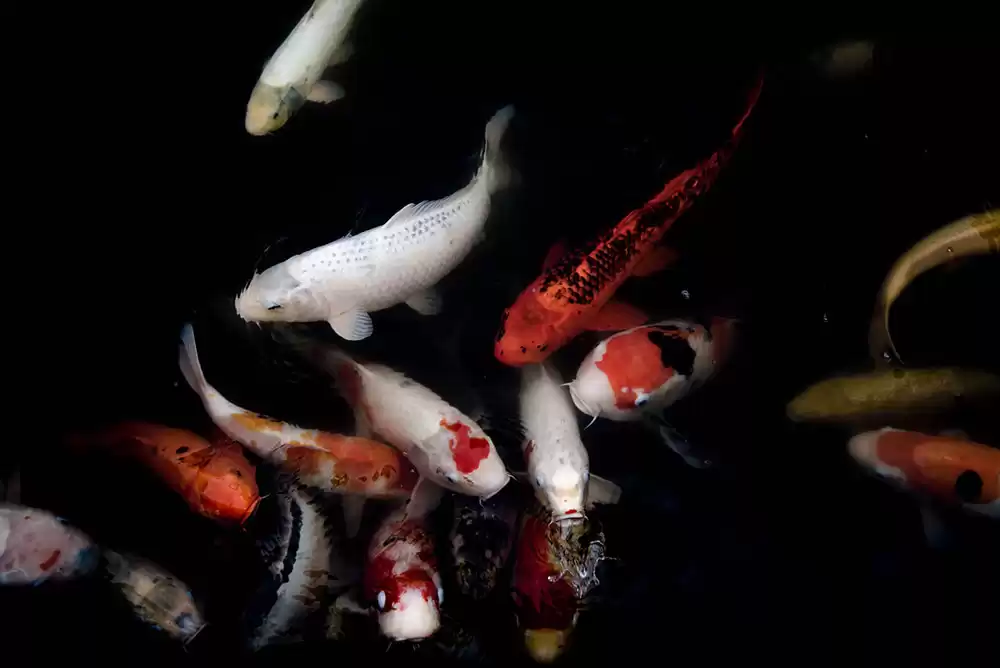
01 Jan Koi Pond Spring Cleaning and Maintenance Checklist
All pond owners should do koi pond maintenance regularly, especially in the spring. You are welcome to do the job yourself or get a pond maintenance service specialist to get the job done for you.
Test the pond water. Once the temperature gets somewhere above 50 degrees Fahrenheit, you can safely start doing koi pond maintenance. Continue reading to learn more about what you need to do to perform proper pond maintenance.
Clean Out Sludge and Debris
During the winter, sludge and debris buildup will inevitably be in your koi pond. It is essential to clean it all out during the spring to prevent algae growth in the coming months. This step will ensure your koi fish will stay healthy year-round.
Remove Fish and Drain the Pond
Use a sump pump to remove about one foot of water from the pond. Put some of that pond water into a holding tank (which should have a capacity of at least 200 gallons). Doing this will reduce the stress on the fish once you transfer them to the tank. Next, please fill the rest of the tank with clean water and introduce each koi to their temporary home. Finally, drain the rest of the water out of your koi pond so you can continue with your koi pond maintenance.
Inspect the Pond for Problems
Once you have drained the pond, do an inspection to look for overgrown foliage, remove non-organic debris, dispose of broken materials, check for damage to the pond liner, and rearrange rocks that may have shifted out of place. This step is crucial if you want to reduce the number of koi pond issues cropping up soon.
Clean the Sides and Structures
Weeds and muddy spots can make your pond look less than appealing. If you do something about them, it will eventually help the health of your koi pond ecosystem. After double-checking that there are no problems or damage in the pond, use a sump pump to flush out all the muck around every nook and cranny of your koi pond. Next, use a vacuum pump to clean out the waste buildup around the sides and edges of the pond.
Pressure Wash the Pond
During any pond maintenance project, a pressure washer will be your new best friend. Spray the interior of your pond, holding the pressure washer nozzle at least eight inches off the ground. Remembering to do this will prevent undue damage to the pond rocks and landscaping.
Clean the Skimmer
The skimmer catches all the leaves and debris you do not catch yourself and needs regular maintenance to perform at its best. It is an absolute must to clean the skimmer when you are doing pond maintenance in the springtime. To clean this equipment, begin by detaching the pump, then remove the skimmer. Use a hose to clean it off, then put it back together in reverse order.
Backwash the Filter
Your filter works hard to keep the pond water clean, so take care of it by backwashing the system at least once a year. You will need to backwash the filter to dispose of the remaining debris in the system.
Most pond pumps come with their backwash setting, so turn off the pump, switch the valve to backwash, then run some water through it. Observe the discharge pipe and turn off the water once it starts to run clear. Next, switch the valve to the rinse setting. Do the same step as before, watching for the water to clear. Then, you can reset the valve to the regular filter setting and continue using your filtration system as normal.
Treat Fish for Parasites and Infections
If you notice any fish frequently coming to the surface gasping for air, koi with pale gills, or increased redness or sores on their skin, these are signs that your koi may have infections.
A potassium permanganate solution is one of the most common things you can use to treat koi for parasites.
Algae Control
You can add aquatic plants to your pond to help prevent algae buildup. However, if you see algae while inspecting the pond during your koi pond maintenance, use a pressure washer to clean it off before refilling the pond.
Refill the Pond and Reintroduce the Fish
The final step for koi pond maintenance entails refilling the pond with new, clean water. Before reintroducing the fish back into the koi pond, add a pond detoxifier to treat the water. Make sure you follow the instructions on the label. A detoxifying solution will neutralize chemicals, such as chlorine or fluorine, that may be present in the water.
Enjoy!
If you need more time to do regular spring cleaning and koi pond maintenance on your own, reach out to Shawn at Aquatic Gardens. See the difference our pond maintenance service can make to maintain your koi fish’s health all year long.



